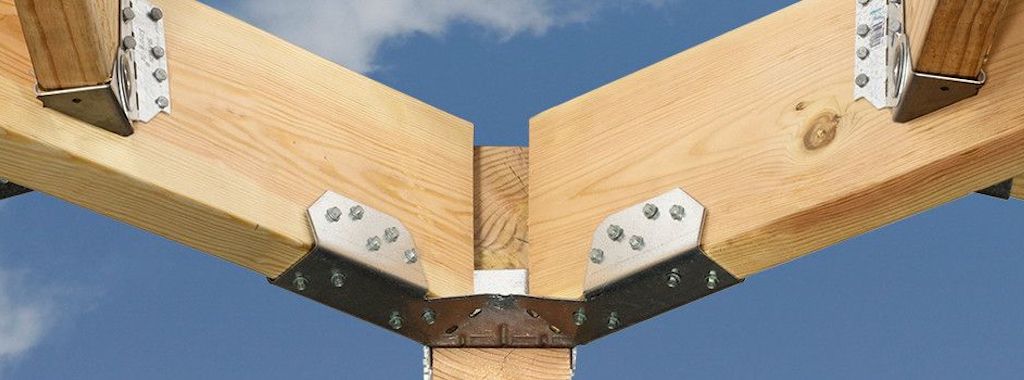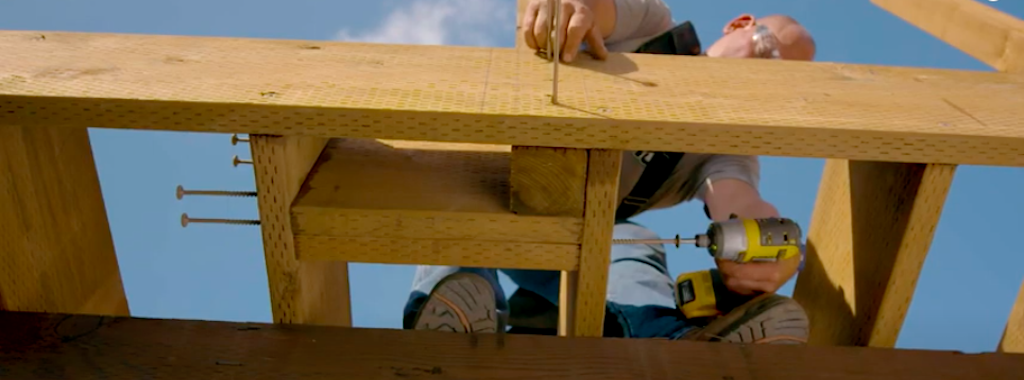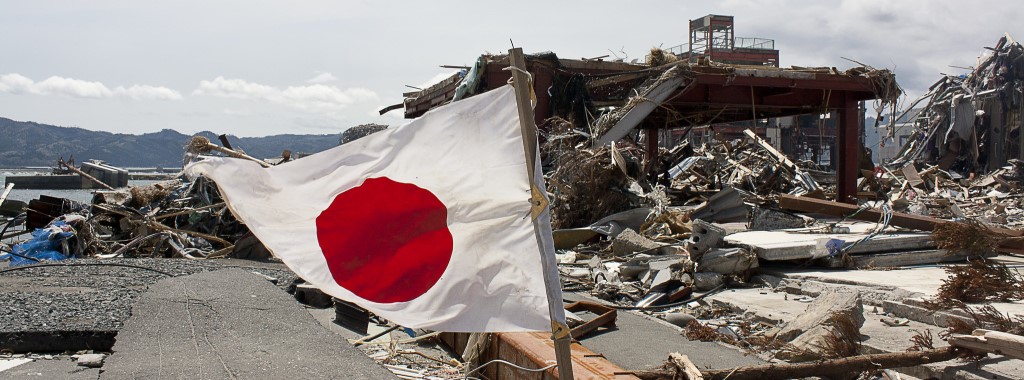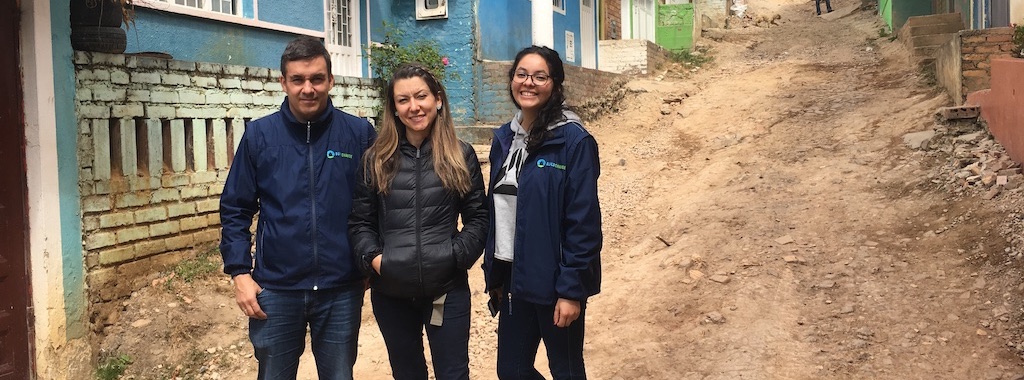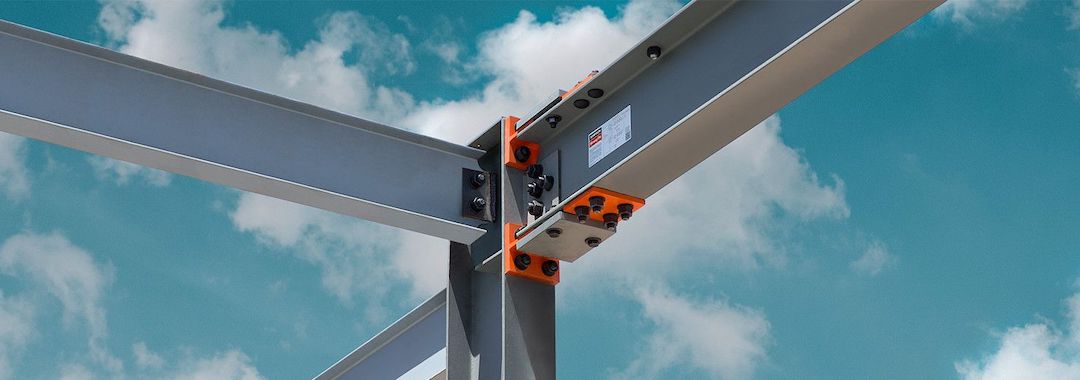While stick-frame roofs are sometimes preferred to premanufactured roof trusses in some areas of the country because they can accommodate larger attics, higher ceilings, and complex roof shapes, the code requirements for these roofs are often more complex. That’s largely because, unlike truss-framed roofs, the code needs to provide a complete prescriptive method of building the roof, including the multitude of connections that must be made in the field. And, to complicate matters further, the code requirements for stick-frame roofing have been rewritten in each of the last two code cycles. I’d like to give you a high-level overview of some of those changes. In a previous SE Blog post, we discussed the design concepts of stick-framed roofs, and summarized a few of the solutions offered by the Simpson Strong-Tie® connector system for stick-frame roofing. The main concept in that post was the necessity of a continuous tie across the bottom of the rafter system to prevent the heels of the rafters from spreading under load and pushing out on the tops of the walls.
Category: Education
Our educational posts are dedicated to helping our customers and the general public acquire a deeper understanding of how we support academia- including our many partnerships with various colleges such as Cal-Poly Tech and Washington State University and sharing solutions and how they relate to the industry.
Questions Answered: Deck Guard Post Connections Webinar
In this post, we follow up on our May webinar, Safer, Stronger Decks: Guard Post Connections, by answering some of the interesting questions raised by attendees.
Pandemics, Earthquakes and Windstorms: Some Thoughts on the Probability of a Compound Disaster
With the growing danger of natural disasters, the race is on to expand access to programs that safeguard lives from the human-made danger of poorly built housing. With the common mission of building safer, stronger structures, Build Change and Simpson Strong-Tie have partnered for the Simpson Strong-Tie® Fellowship for Engineering Excellence program. This year’s fellow is Build Change Engineering & Design Services Director Tim Hart, SE. As with our previous fellows, Hart is documenting his journey with the program on the Simpson Strong-Tie Structural Engineering blog.
One of my colleagues asked me an interesting question recently: “What if there was an earthquake in the middle of this pandemic?” His question regarded how buildings would be inspected and tagged after an earthquake, since that would require inspectors to go inside buildings to look for damage. I responded to him in that context, saying that inspectors will likely already have personal protective equipment (PPE) and will already be trained to act safely and responsibly. However, his question led me to think about the larger implications of his question, beyond just the logistics of post-earthquake building inspections.
Build Change: Seismic Safety in the Age of COVID-19
With the growing danger of natural disasters, the race is on to expand access to programs that safeguard lives from the human-made danger of poorly built housing. With the common mission of building safer, stronger structures, Build Change and Simpson Strong-Tie have partnered for the Simpson Strong-Tie® Fellowship for Engineering Excellence program. This year’s fellow is Build Change Engineering & Design Services Director Tim Hart, SE. As with our previous fellows, Hart is documenting his journey with the program on the Simpson Strong-Tie Structural Engineering blog.
When I agreed to travel for Build Change to the Philippines and Indonesia in March, some of my friends and colleagues told me I was brave. Others told me I was crazy. One asked me whether I was afraid that I would not be able to get home. At the time, I felt it was safe to go since there were only a few cases reported in the Philippines, Indonesia and the United States. Even so, I waited until the last minute before I told my mother of the trip, knowing that she would be worried and would try to talk me out of going.
Dr. Lucy Jones: Mitigation Creates Community Resilience
A Shinto shrine in the Japanese coastal town of Minamisanriku has been the center of its community for centuries. In 1960, a tsunami generated by the great Chilean M9.5 earthquake swept into the ocean bay and damaged the shrine. The priest’s house situated at a higher elevation than the shrine had been spared any damage. The community came together and not only repaired the shrine but moved it up the hill, 50 feet above its previous location, to protect it from future events.
The Simpson Strong-Tie Excellence in Engineering Fellowship, A Grateful Adventure
Before starting my fellowship, a year seemed like a very long time to be away from my day-to-day life, my clients, and my comfort zone. I started with many questions about how I could support the Build Change team to make the biggest possible impact with this fellowship. Once I started, however, I found more than a great team; I found a family. I would like to start this blog by praising the support of every member of the teams that I worked with, including the Build Change headquarters staff, as well as the staffs of the programs in Colombia and the Philippines.
Trainer to the Pros — How Simpson Strong-Tie Educates the Industry
Did you know that Simpson Strong-Tie offers free education and training to the construction industry?
Indeed, we do. For several decades, Simpson Strong-Tie has made a commitment to supporting the development of our industry, and each year we educate tens of thousands of industry pros — engineers, architects, dealers, contractors and building inspectors — about the latest building code updates and best construction practices.
Questions Answered: Deck Ledger Connections for Wood and Masonry
In this post, we follow up on our July webinar, Safer, Stronger Decks: Ledger Connections for Wood and Masonry, by answering some of the interesting questions raised by attendees.
During the webinar we discussed code-compliant ledger connection
options for both wood and masonry construction. In case you weren’t able to join our discussion, you can watch the on-demand webinar and earn PDH and CEU credits here.
The Role of Microfinance Institutions in Build Change’s Retrofitting Strategy
The year is moving fast; my time supporting the team in Colombia is over. My time is now fully committed to the program in the Philippines.
During my initial trip, I had the chance to visit some of the communities where Build Change has been working and become familiar with the existing tools used in these communities. Also, I was introduced to the crucial role that microfinance institutions (MFIs) play in Build Change’s strategy to retrofit vulnerable houses in the Philippines.
Questions Answered: Yield-Link® Connection for Steel Construction
In this post, we follow up on our May 2 webinar, Seismic Resilience and Risk Assessment of the Yield-Link® Connection for Steel Construction, by answering some of the interesting questions raised by the attendees.
During the webinar, we discussed how to achieve seismic resiliency in steel construction with our Yield-Link connection for steel special moment frames and the Seismic Performance Prediction Program (SP3) by Haselton Baker Risk Group. In case you weren’t able to join our discussion, you can watch the on-demand webinar and earn PDHs and CEUs here.
As with our previous webinars, we ended with a Q&A session for the attendees. Jeff Ellis, our Director of Codes and Compliance, and Curt Haselton and Jared Debock, from Haselton Baker Risk Group, answered as many questions as they could in the time allowed. Now we are back to recap some of the more commonly asked questions and their answers. If you’re interested in seeing the full list of questions, click here.
Continue Reading



